|
Introduction:
The Israel Canaan Dog
is a unique breed, and therefore one that holds a position of great importance to cynology.
The Canaan Dog is considered to be a primitive breed. As such it is very
close in type and behavior to the original dog, the ancestor of all of our dogs of today.
It is one of the very few breeds existing today that is purely natural, a reflection of development based on the necessities
of survival, rather than being the result of selective breeding to produce a dog that was suitable for a particular task or
environment.
This breed existed solely as a free-living pariah until the end of the 1930s. A good number of animals were added to
the gene pool from the pariah population through the 1980s. Nowadays, we rarely
have the good fortune of being able to find a wild born dog that we can add to the breeding population. The breed is, today,
very much as it has been through its thousands of years of history, and it is important to preserve these characteristics,
existing in so few modern breeds, for the future. We are looking for a survivor, a sound and hardy animal that is capable
of surviving in the very harsh environment of its natural home.
The Canaan Dog developed in a relatively limited area, which is defined as present day Israel. Although dogs of similar type can be find more widely spread in the middle east, there is growing variation
the further we get from this specific area, and we find dogs that are obviously related but of a somewhat different type in
surrounding countries such as Syria, Turkey, and Egypt.
Lets consider the definition of a pariah dog. The pariah is the general term for a large and widely distributed group of semi-wild or feral dogs found
across southern Asia and Europe as well as throughout Africa, and which also includes the dingo of Australia. There is even a feral dog that has recently been recognized as a breed in the United States, and which
is very similar to the other pariahs, the Carolina Dog. Pariah dogs from locations
that are geographically very distant from one another can still be very similar in type, to the point where they could be
mistaken as being of the same breed this is very logical when we consider that these dogs are the closest existing relatives
to the historical original dog, and that their appearance is the result of adaptation and the necessities of survival. The variation from type to type of pariah is not sharp, but a gradual change in response
to changing geographical and climatic conditions, and similar but varying types may exist, overlapping so to speak, in the
same area. Overall, the pariahs tend to be of medium size, very powerful for
their size, often tawny or reddish in color, though some are black and spotted. The
coat is usually of medium length, harsh, thick and weather resistant. Pariahs
commonly have prick ears that tend to be carried somewhat obliquely rather than standing perfectly straight
Pariahs have been known for thousands of years and were thought of
as mongrels once-domestic dogs and their descendents that had taken to the wild. Current
scientific opinion tends to think that they represent an original strain of wild dog that has not yet become totally domesticated. The constant characteristics that have maintained themselves over millennia
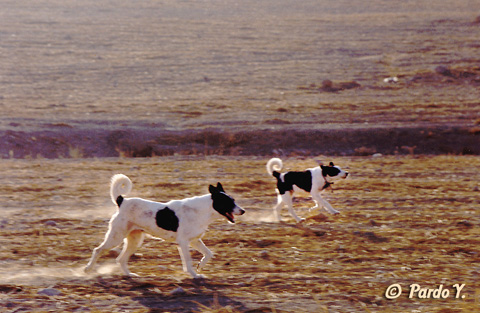
|
| Wild dogs near Arad, Aug.2002 |
|
 |
|
|
|
 |
|
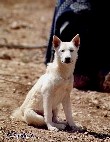
|
| Bedouin Canaan, 2001 |
argue against these animals simply being mongrels fleeing civilization. They seem to be originally wild animals that have achieved and maintained, through
generations, a semi domesticated, more or less symbiotic relationship with man, and that behaviorally may occupy the full
range between absolute wildness and full domestication. Furthermore, any animal,
regardless of its place at birth within this range, can adapt itself to a changing environment, either towards wildness or
domestication. It is not uncommon for wild pariahs that have been tamed to later
be indistinguishable in behavior from those that were born to domestication, while instances are also known of domestic pariahs
returning to the wild and doing very well there.
Certainly as far as
the Canaan Dog is concerned, this is all true. The Canaan has proven to be highly
adaptable to a wide range of environments and living conditions from wild and semi wild Bedouin dogs to pampered city apartment
pets. But the Canaan is no mans slave but rather his partner and reserves the
right to choose the terms of the relationship.
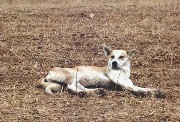
|
| Tel Arad 2001 |
| Bedouin dog near Massada, 1987 |
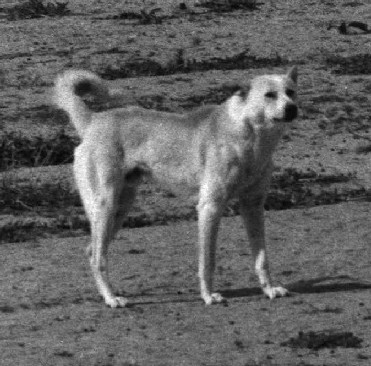
|
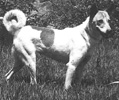
|
| Wild born Canaan, late 1960's |
|
 |
|
|
|

